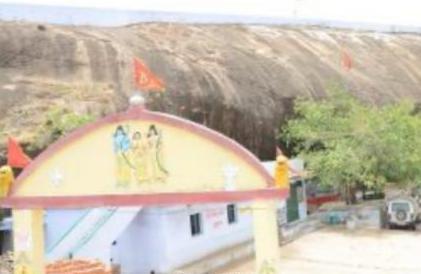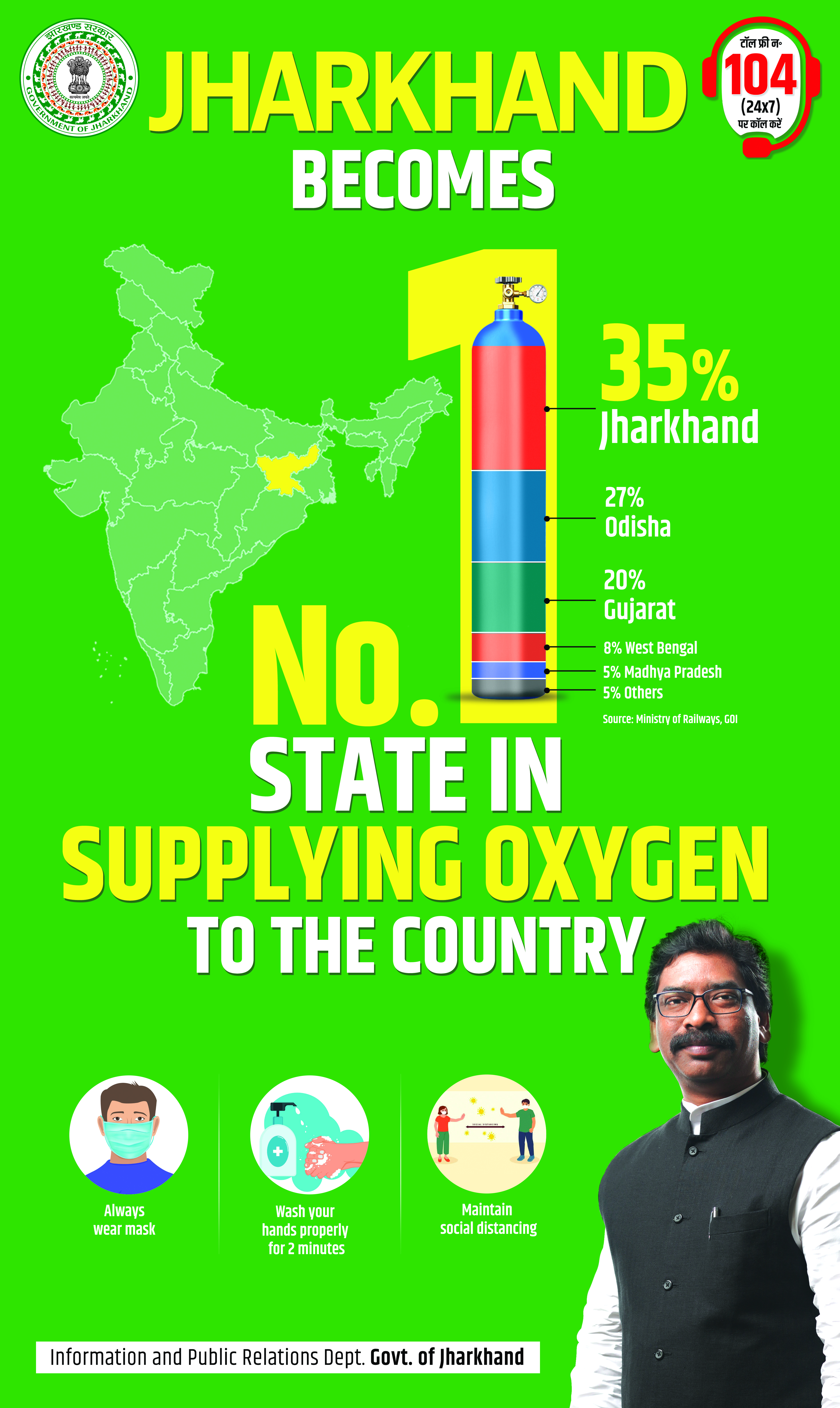
*Ram Rekha Dham in Simdega, Jharkhand
The Ayodhya - Lanka route that Lord Ram, Sita, and Lakshman covered during their 'vanvaas' or 14 years of their exile starts from Ayodhya and ends in Sri Lanka.
This path is much revered in the Hindu religion as various key incidents of Lord Rama's life have taken place on this long path. Most Hindu organisations have pinpointed and a tourist circuit is being developed.
This route is depicted in the map being published here. But there are sites in Jharkhand- land of forest- homeland of Adivasis, where Lord Ram, Sita, Laxman and Hanuman figured as travellers in folklores, but not in the ‘Ram Van Gaman Path’.
(Sita waterfall in Ranchi near Johna waterfall in Ranch)
JharkhandStateNews.com has studied three sites where Lord Ram, Sita, Laxman and Hanuman figure in rocks and folklore, but not in the Ram Van Gaman Path list of places.
Consider this.
First, the place is linked with Lord Ram. It is the village Anjan in Gumla district. The name Anjan is derived from the word ‘Anjani’, the name of the mother of Lord Hanuman.
Devi Anjani was the daughter of a Sage Gautami. According to mythology, the village is believed to be the birthplace of Lord Hanuman. The site is popular for its Anjani cave, a cave that is located on the top of the hill.
This cave has a temple that enshrines an idol of Devi Anjani with Hanuman in her lap. Many objects of archaeological importance have been found from this site are placed at Patna Museum.
The majority of people of this village are the Oraon tribe who are known as the devotees of lord Hanuman. They say they belong to the lineage of Lord Hanuman. The word Oraon is a dialectical variation of O Ram. In treatayuga, seeing lord Rama, the Oraon people started dancing and jumping saying, O Ram, O Ram.
Thus, they were named as the Oraon. The Oraon people lead their very simple life by eating roots, herbs and fruits of the forest. The male Oraon, till date, wears their lower dress in the form of langoti whose ends hanging like a tail (Shri Parsuramji Mishra, Kalyan: Hanuman Ang, 42, Geeta Press, Gorakhpur, p. 428). About the birth of lord Hanuman, in the Hanuman Chalisa, Goswami Tulsidas mentions lord Hanuman as Sankarsuwan Kesri Nandan.
This corroborates the story mentioned in the Shiva Purana. Once lord Shiva met lord Vishnu and said I have seen your different forms but never seen your Mohini face. Kindly show me your Mohini form. On the request, lord Vishnu turned into his Mohini form. According to Agni Purana, seeing the beauty of Mohini, Shiva enchanted her and followed Mohini.

(Anjani Dham, Gumla, Jharkhand)
Consequently, some of his seeds (sperms) fell on the ground and transformed into Lingas, the symbolic form of Shiva. His semen also generated lord Hanumana. Later, lord Hanumana helped Vishnu Avatar Rama in his battle with Ravana as mentioned in the Ramayana.
The Shiva Purana mentions that by the mere glimpse of Mohini, Shiva spits out his seeds. The seeds had such heat that the earth was unable to sustain them.
Under the study programmes of Jharkhand, the Indira Gandhi National Centre for the Arts- Ranchi Regional Centre (RRC), had launched a major research programme entitled “Documentation of the Art Heritage of Anjan Village”, Gumla District of Jharkhand state. Under this programme, a team of scholars under the leadership of Dr Bachchan Kumar, then Regional Director, Indira Gandhi National Centre for the Arts- Ranchi Regional Centre, visited Anjan village.
Second place is Ramrekha Dham. It is located in a forest area, about 26 km from Simdega.On top of a hill, there is a massive cave. On top of this cave lies Agni Kund, Charan Paduka, Sita Chulhe, Gupt Ganga. As per belief among the Oraon tribe, Lord Ram together with Mother Sita and Brother Laxman stayed here after visiting a temple of Bhagwan Shiv located inside the cave. Every year thousands of people visit Ramrekha Dham.
The third place linked to Lord Ram is the Sita waterfall located in the Ranchi district. Among tribals residing in villages is a folk song indicating that ‘mother Sita’ together with Lord Ram and Laxman had visited this area and the tribals inhabiting the villages near the Sita waterfall named it on her name.

The Sita waterfall is linked with the Radhu River, a tributary of the Subarnarekha River. The falls drop from 43.90 metres (144.0 ft).
As per the Ramayana epic, Lord Rama through his wandering years traveled from India to Sri Lanka. During his ‘vanvaas’ (exile), he was not allowed to stay in any village or town and live his life in a forest.
Owing to this, after taking his leave from Ayodhya, Lord Rama wandered through the forests of Uttar Pradesh, Chhattisgarh, Madhya Pradesh, Odisha, Karnataka, Telangana, Maharashtra and Tamil Nadu.
Sadly, in the Ram Van Gaman Path- officially identified places traveled by Lord Ram. These three places of Jharkhand - Anjani gram,Gumla, Ramrekha Dham, Gumla, and Sita Waterfall, Ranchi don’t figure. Why? Nobody knows the answer.
